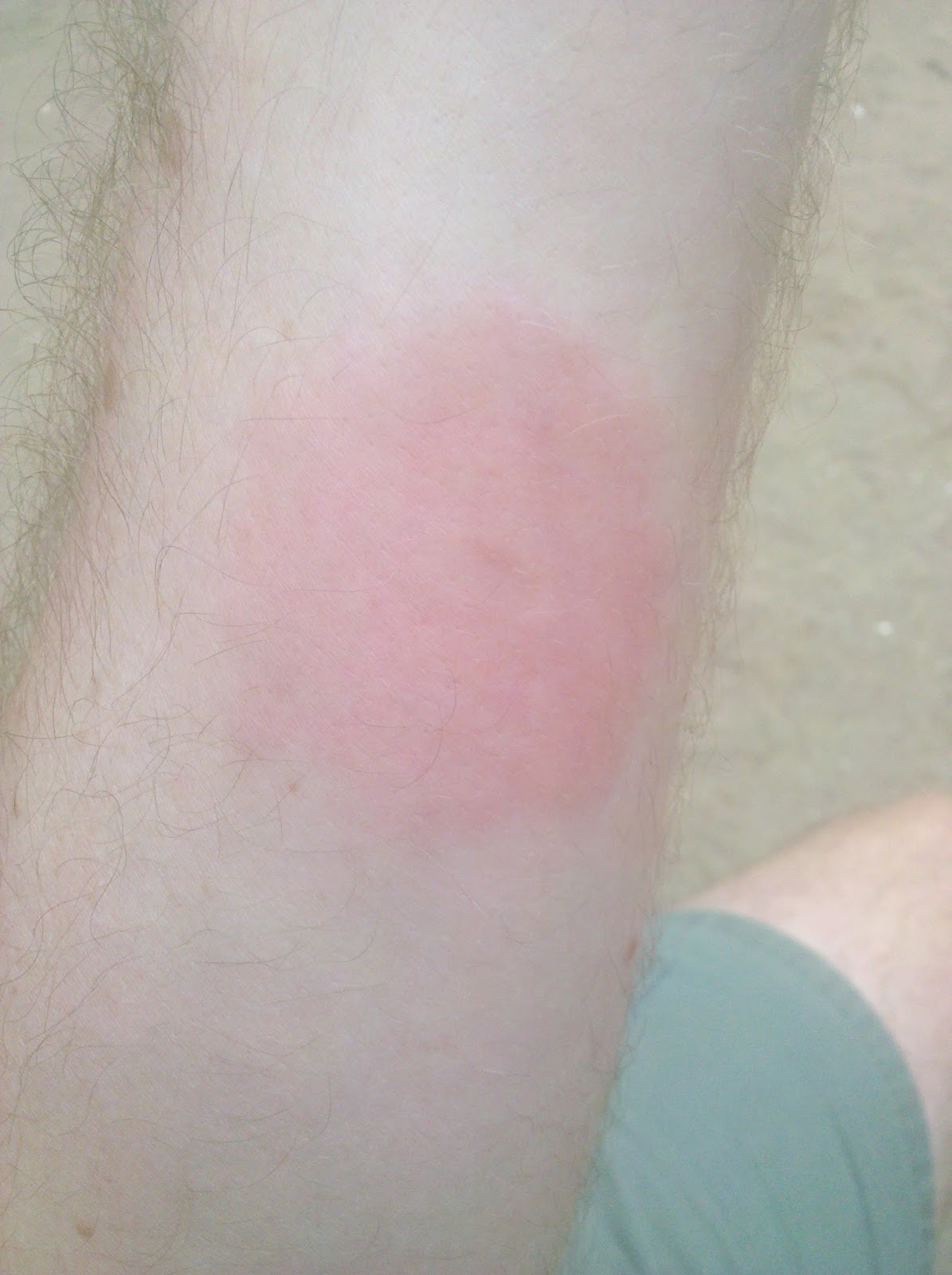Luckily, I am not that susceptible to bee venom. But my minor allergic reaction to getting stung last summer means I am at increased risk of anaphylaxis in the future. I was at summer camp at Camp Fiesta Island, San Diego, CA, the week of 4 July with my Boy Scout troop. For the rest of this article, I present my point of view of an injury and its treatment.
Here is a picture from immediately after the bee sting. To give the viewer some perspective, that is my left forearm above a table. The bee sting is the reddening spot on the right (underside) of the arm. This bee had discovered a nice place to rest in a fold of my T-shirt when I brushed my arm against her.
 |
| Bee sting is on the side of the arm. Picture taken immediately after impact. |
I knew this was a relatively minor injury for me and cleaned my arm after scraping out the stinger. Then I watched for allergic reaction and was prepared to treat for shock. As it happens, the bee sting did lead to an allergic reaction. I treated the symptoms with calamine lotion to control the itching and antibiotic lotion to prevent infection.
 |
| One day after I attacked a resting bee. |
The venom spread slowly, as it does, through the muscle tissue in my arm. It looked the worst several days after the attack.
 |
| Bulls eye. Three days later. |
After about a week, I still had a bruise from the tissue damaged by the venom but had otherwise recovered. It's important to note that I was not grievously injured here. Bees leave only small puncture wounds but can cause serious allergic reactions. This is clearly an allergic reaction but it is minor.
 |
| Just a bruise. |